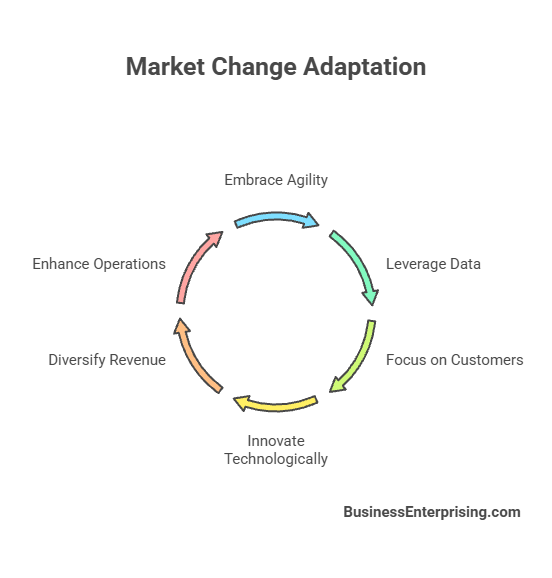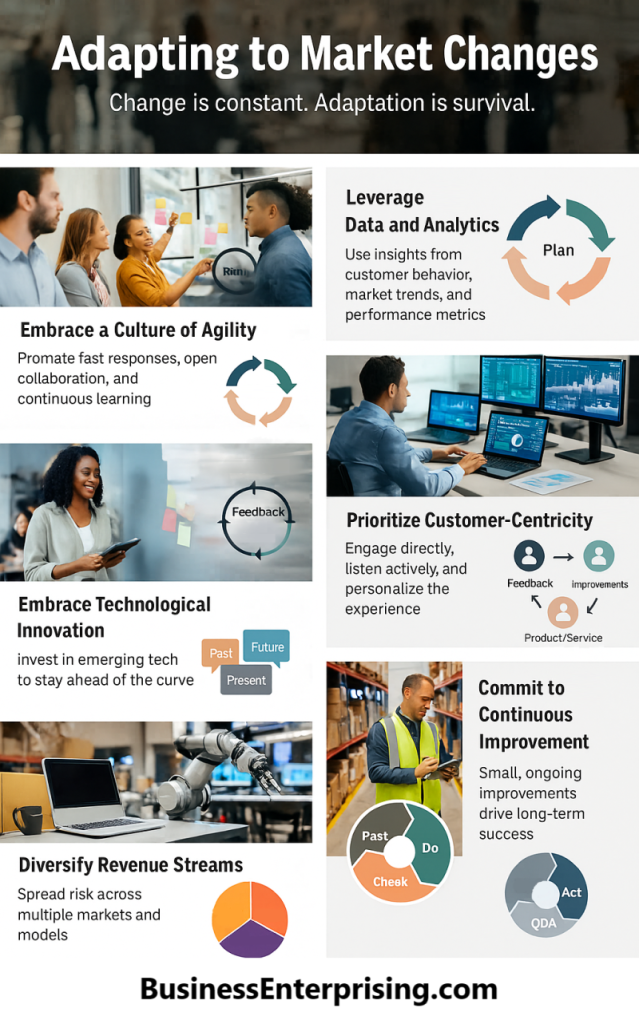
Embracing a Culture of Agility
One of the most critical aspects of adapting to market changes is fostering a culture of agility within the organization. Agility involves the ability to quickly respond to new opportunities and challenges, making adjustments as necessary to meet market demands. To cultivate an agile culture, companies must encourage open communication, collaboration, and continuous learning among employees. By promoting an environment where team members feel empowered to share ideas, businesses can foster innovation and adaptability.
Furthermore, implementing agile methodologies, such as Scrum or Kanban, can help streamline processes and enhance flexibility. These methodologies emphasize iterative development, regular feedback, and incremental improvements. Training employees on agile practices and encouraging cross-functional collaboration can further enhance the organization’s ability to respond to market changes swiftly and effectively.
Leveraging Data and Analytics
Data-driven decision-making is essential for navigating market changes. Companies that leverage data and analytics can gain valuable insights into market trends, customer behavior, and competitive dynamics. By analyzing this data, businesses can make informed decisions and develop strategies that align with market conditions. Investing in advanced analytics tools and technologies can help companies collect, process, and analyze vast amounts of data, enabling them to identify patterns and trends that may not be immediately apparent.
Additionally, implementing real-time data monitoring systems can provide companies with up-to-date information on market developments. This allows businesses to respond proactively to changes and seize opportunities as they arise. For example, by tracking customer sentiment on social media and review platforms, companies can gain insights into shifting consumer preferences as well as adjust their marketing strategies accordingly.
Focusing on Customer-Centricity
Adapting to market changes often requires a deep understanding of customer needs and preferences. Companies that prioritize customer-centricity are better equipped to navigate shifts in the market and deliver products and services that resonate with their target audience. To achieve this, businesses must actively engage with their customers and gather feedback through surveys, focus groups, and other channels. Understanding the pain points and desires of customers can help companies develop solutions that address their needs effectively.
Moreover, providing exceptional customer service and creating personalized experiences can enhance customer loyalty and satisfaction. Implementing customer relationship management (CRM) systems can help businesses manage customer interactions and data more efficiently, enabling them to deliver tailored experiences. By staying attuned to customer feedback and continuously improving their offerings, companies can build strong relationships and adapt to changing market conditions.
Embracing Technological Innovation
Technological advancements are a significant driver of market changes. Companies that embrace technological innovation can gain a competitive advantage and remain relevant in a rapidly evolving landscape. Investing in research and development (R&D) can help businesses stay at the forefront of technological trends and develop innovative solutions that meet market demands. For instance, adopting emerging technologies such as artificial intelligence (AI), blockchain, and the Internet of Things (IoT) can open up new opportunities and streamline operations.
In addition to adopting new technologies, companies should also focus on digital transformation. This involves integrating digital technologies into all aspects of the business, from operations and marketing to customer service and supply chain management. Digital transformation can enhance efficiency, improve decision-making, as well as enable companies to respond more effectively to market changes. Providing training and resources to employees can help them adapt to new technologies and leverage them to drive business success.
Diversifying Revenue Streams
Reliance on a single product, service, or market can increase vulnerability to market changes. Companies that diversify their revenue streams are better positioned to withstand market fluctuations and maintain stability. This can involve expanding product or service offerings, entering new markets, or developing new business models. For example, a company that primarily sells physical products may explore opportunities in digital products or services to diversify its revenue base.
Conducting thorough market research and identifying emerging trends can help businesses identify new opportunities for diversification. Additionally, forming strategic partnerships and alliances can provide access to new markets and resources, further enhancing the company’s ability to adapt to market changes. By spreading risk across multiple revenue streams, companies can reduce their dependence on any single market segment and build resilience.
Continuous Improvement and Innovation
Continuous improvement and innovation are essential for staying competitive in a changing market. Companies must adopt a mindset of constant evolution, seeking ways to enhance their products, services, and processes. Implementing a continuous improvement framework, such as Lean or Six Sigma, can help businesses identify inefficiencies and make data-driven improvements. Encouraging employees to contribute ideas and participate in innovation initiatives can also drive creativity and improvement.
Additionally, fostering a culture of experimentation can help companies test new ideas and approaches without fear of failure. By running pilot projects and conducting A/B testing, businesses can gather insights and refine their strategies before scaling up. This iterative approach allows companies to learn from their experiences and make incremental improvements that enhance their ability to adapt to market changes.
Enhancing Operational Flexibility
Operational flexibility is crucial for adapting to market changes. Companies must be able to adjust their operations quickly and efficiently to respond to new demands and challenges. This can involve optimizing supply chain management, improving production processes, and implementing flexible workforce arrangements. For example, adopting just-in-time inventory management can help businesses reduce excess inventory and respond more quickly to changes in demand.
Additionally, building a flexible workforce can enhance operational agility. This may involve cross-training employees, implementing flexible work schedules, and leveraging temporary or contract workers during peak periods. By creating a versatile and adaptable workforce, companies can respond more effectively to market fluctuations and maintain productivity.
Conclusion
Adapting to market changes is a multifaceted process that requires a strategic and proactive approach. By embracing a culture of agility, leveraging data and analytics, focusing on customer-centricity, embracing technological innovation, diversifying revenue streams, pursuing continuous improvement, and enhancing operational flexibility, companies can navigate market changes effectively and achieve long-term success.
As the business environment continues to evolve, staying attuned to market trends and remaining flexible as well as responsive will be key to maintaining a competitive edge. Companies that prioritize adaptability and innovation are better positioned to seize new opportunities, mitigate risks, and drive sustained growth. Ultimately, the ability to adapt to market changes is not just a necessity but a critical driver of business success in today’s dynamic landscape.


